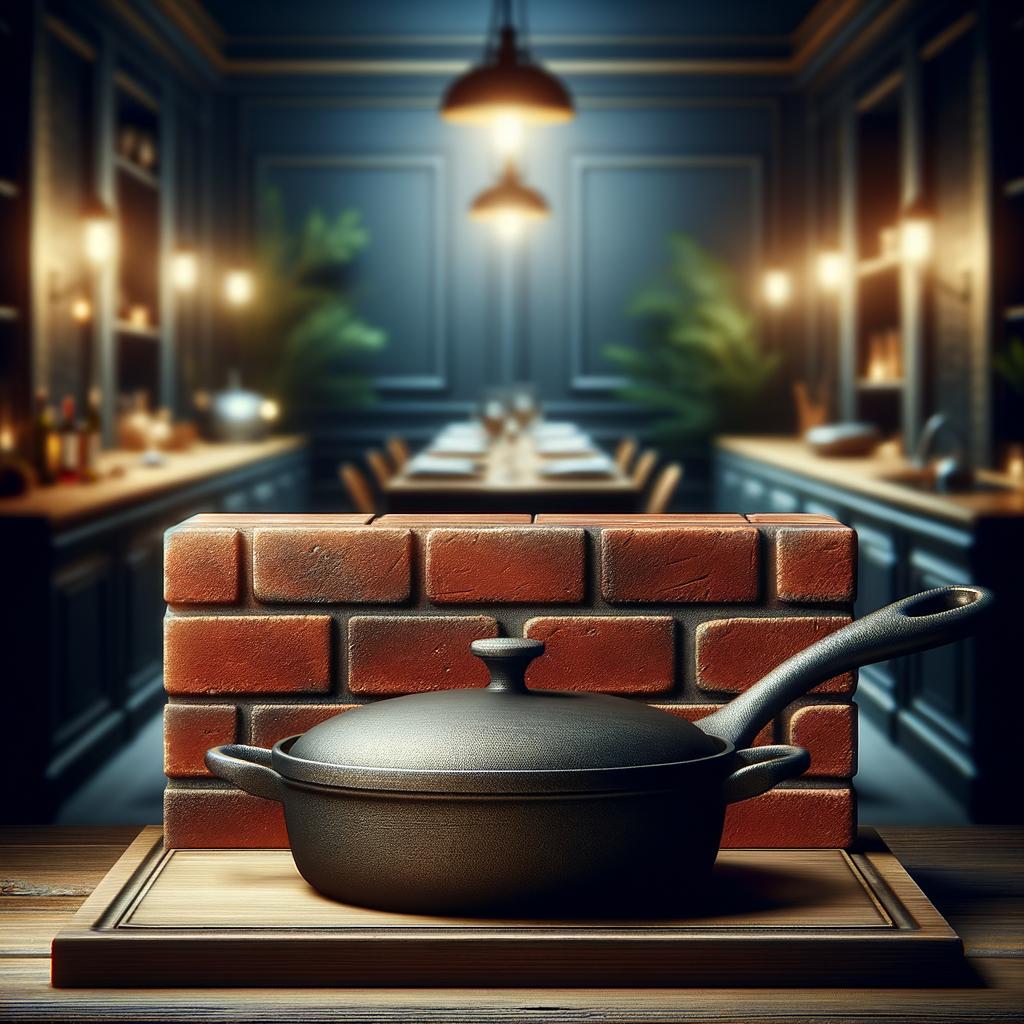Brick or Heavy Skillet

Description The brick or heavy skillet is a fascinating culinary tool rather than an ingredient. It's a solid, hefty piece of cookware, usually made from materials like cast iron, stainless steel, or even clay. Its appearance is robust and sturdy, a testament to its durability and resilience. The surface is smooth, almost velvety, and it heats evenly, making it a cherished item in many kitchens. Its unique characteristic is its weight. Unlike lighter pans, a heavy skillet can retain and distribute heat more efficiently, making it ideal for a variety of cooking techniques.
Primary Uses A brick or heavy skillet is a versatile tool in the culinary world. It's commonly used for searing, frying, and sautéing, but it's also perfect for slow-cooking dishes that require consistent heat, like stews or braises. It's a key component in many cuisines, from the American South's traditional cornbread to the perfect French omelette. In Italian cooking, a brick is often used to weigh down chicken for a dish called "chicken under a brick." Beyond its culinary uses, it's also a symbol of home and hearth, a staple in kitchens around the world.
History The history of the heavy skillet spans centuries and continents. It was a mainstay in colonial American kitchens, where it was used over open fires for almost every meal. In European history, it played a significant role in hearty peasant dishes that required slow, even cooking. Its use and popularity have evolved over time, but it remains a beloved kitchen tool. There are stories of skillets being passed down through generations, each one carrying the flavors and memories of meals past.
Nutritional Information While a skillet itself doesn't have nutritional value, it can significantly impact the nutritional profile of the food cooked in it. For instance, a cast-iron skillet can increase the iron content of food, a crucial nutrient for maintaining healthy blood cells. Additionally, cooking with a heavy skillet often requires less oil than other methods, potentially reducing the fat and calorie content of dishes. It also promotes better heat distribution, which can help preserve the nutrients in your food. Compared to lighter pans, a heavy skillet can contribute to healthier, more nutrient-dense meals.

